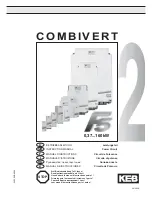
Control & Operation
®
4826 Sterling Drive, Boulder, CO 80301
PH: 720.406.8946 | [email protected] | www.psaudio.com
15-042-21-1 Rev A
Instruction i
©2010 PS Audio International Inc. All rights reserved.
The PWD has two basic types of filters with several
combinations of the two available. The two filter types are:
Linear Phase and Minimum Phase as well as Recursive Non-
Half Band (which is basically a combination of the first two).
Within these two main filter types (Linear phase and Minimum)
there are several variations to choose from on each filter,
including Apodising and Soft Knee Filters.
From a user perspective, we recommend choosing whichever
filter sounds the best to you without being overly concerned
about understanding these extraordinarily complicated subjects.
Our favorite on the PS system is Minimum Phase Apodising
“MP Apod” on the touch screen.
A brief explanation of each filter type appears below.
Linear Phase and Minimum Phase filters
Linear phase filters have been widely used in DACS for over
20 years because they introduce no group-delay distortion,
minimize post ringing and have a phase response that is
the same for all frequencies but at the cost of pre-ringing.
Conversely minimum phase filters have some group- delay
distortion, some minimal phase shift with frequency but little
pre-ringing.
Most DAC digital filter designs tend to focus on the frequency
response and neglect the time domain response. However there
is now an increasing interest in the effect that time-domain
properties of these filters have on the perceived audio quality,
thus the PWD offers a choice between 5 different filter types
described in this section.
Generally speaking, linear phase filters are focused on
maximizing the frequency domain while minimum phase filters
are designed to maximize the time-domain performance.
Group delay is a time domain issue where different frequencies
arrive slightly out of time with the other frequencies. A filter with
no group delay (such as a linear filter) means that all frequencies
arrive at the same time). The issue from an audibility standpoint
is then how much group delay is audible and acceptable?
Research has shown the ear is relatively insensitive to group
delay distortion of several milliseconds for low frequencies (less
than1kHz) and insensitive to +/-0.5ms over the 1-5kHz band.
Other work shows that the sensitivity to group delay distortion
falls after 4kHz and therefore group delay distortion in the upper
regions of the audio band is much less audible. For a typical
minimum phase filter designed for 44.1kHz the group delay
distortion up to 10kHz is under 2 samples (less then 46μs) and
may be inaudible. The minimum phase filters used in the PWD
have group delay that we feel is inaudible.
Pre-ringing (or Pre-echo) is an interesting type of distortion.
It is a type of additive distortion to the waveform that occurs
before the actual event (sound) occurs and is a product of linear
phase FIR digital filters. The ear appears to be very sensitive to
this type of pre-echo because re-ringing rarely occurs naturally.
As you can imagine it is very rare to hear the artifacts of the
distortion before the originating sound reaches the listener.
Apodising and slow roll off response
The PWD offers both linear and minimum phase filter choices,
along with a Recursive Non-Half Band type, which is a
combination of both. Within each choice of linear and minimum
phase filters the user has the ability to choose either Apodising
or Soft Knee choices.
An Apodising filter is one that can be used to control the time
smear of a whole recording and reproducing chain. This type
of filter can reduce the pre- and post-ringing of the impulse
response in both linear as well as a minimum phase filter
choices.
Soft Knee filters take advantage of the larger transition band to
reduce the dispersion and delay through the filter. Instead of the
classic “Brick wall” filter approach of cutting everything above
the passband off very sharply, a soft knee filter does this in a
gentler fashion, thus minimizing group delay problems.
Three of the filters (LP Apod, MP 1/2B, LP Soft) will have a slight
high frequency roll off within the audio band (20kHz) when you
are using 44.1kHz modes (Native and 44.1) and playing 44.1kHz
material (CD’s). We have included graphs of the frequency
response of every filter for you to see. The audible effects of
this roll off are minimal at best. The most extreme roll off in the
series of filters is LP Apodising, which is -0.2dB down at 19kHz
and -3dB down at 20kHz.
All 3 filters will display ruler flat frequency response to 20kHz,
while playing 44.1kHz material if you increase the sample rate
to a minimum of 48kHz although we do not believe this is
necessary or warranted.
While no Audiophile wants to hear that there is anything lost
in the music, the facts are pretty clear: these small frequency
deviations with different filters at the lower sample rates have
very minimal impact on performance.
The filter choices:
AUTO.
This will automatically choose filter MP Soft for 44.1kHz and
LP Soft for any higher sample rates. These are the choices we
believe work best.
Owner’s Reference
Perfect Wave DAC










































